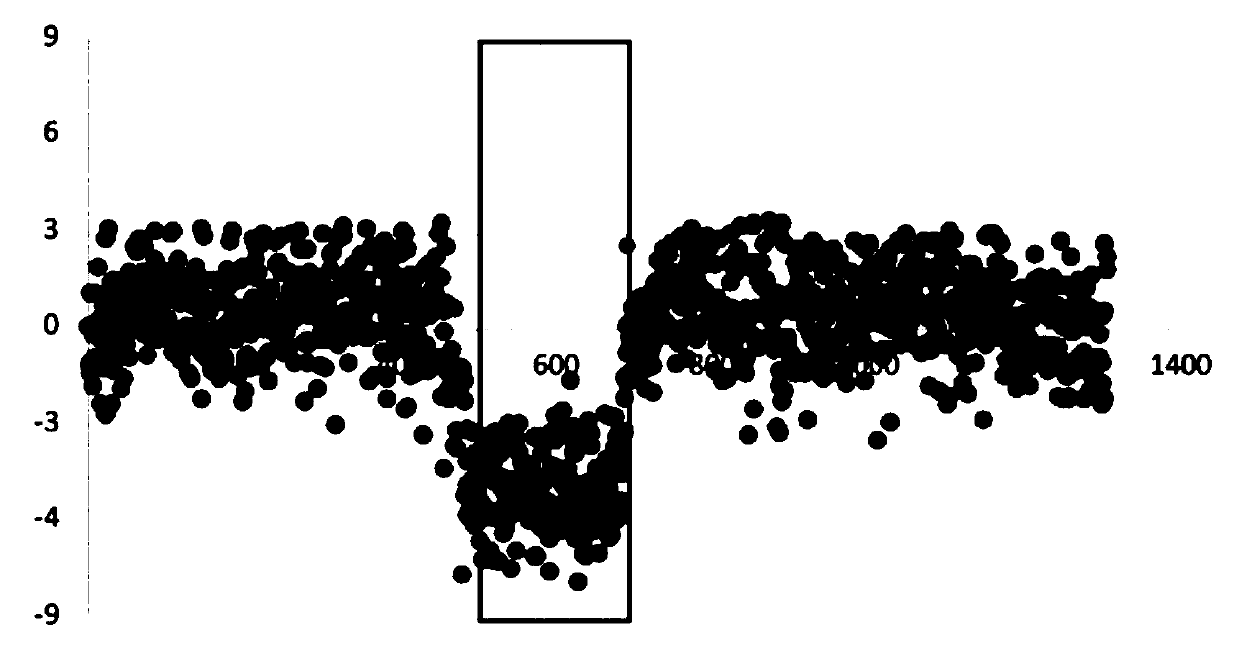Kit for non-invasive prenatal detection of 12 chromosome microdeletion micro-duplex syndromes and special probe set of kit
A technology for chromosomal microdeletion and syndrome, applied in the field of kits and special probe sets, which can solve the problems of long cycle time, complex data analysis, and high cost of whole genome sequencing
- Summary
- Abstract
- Description
- Claims
- Application Information
AI Technical Summary
Problems solved by technology
Method used
Image
Examples
Embodiment 1
[0145] Example 1. Preparation of a kit for non-invasive prenatal detection of 12 chromosomal microdeletion and microduplication syndromes
[0146] 1. Preparation of the probe set
[0147] 1. Design and synthesize 600 probes based on the chromosomal regions corresponding to the 12 chromosomal microdeletion and microduplication syndromes (shown in the third column of Table 1). Each probe consists of 108 nucleotides, from the 5'end to the 3'end including DNA fragment 1, DNA fragment 2, and DNA fragment 3. The nucleotide sequence of DNA fragment 1 is 5'-GACTACATGGGACAT-3'. The nucleotide sequence of DNA fragment 3 is 5'-GGAACCTACGACGTA-3'. Each DNA fragment 2 consists of 78 nucleotides. DNA fragment 2 is a part of the chromosomal region corresponding to 12 types of chromosomal microdeletion and microduplication syndrome.
[0148] 2. After completing step 1, label the probe with biotin. The specific steps are as follows: mix 600 probes uniformly in a total volume of 1.2mL ddH 2 In O,...
Embodiment 2
[0160] Example 2. Establishment of a method for non-invasive prenatal detection of whether a fetus has chromosome microdeletion and microduplication syndrome with the kit prepared in Example 1
[0161] After a lot of experiments, the inventor of the present invention established a method for non-invasive prenatal detection of whether a fetus has chromosome microdeletion and microduplication syndrome by using the kit prepared in Example 1. Specific steps are as follows:
[0162] 1. Extraction of free DNA from the plasma of pregnant women to be tested
[0163] 1. Collect 10 mL of peripheral blood from the pregnant woman to be tested with EDTA anticoagulant blood vessel, centrifuge at 1600g for 15 min at 4°C, and collect supernatant 1 (placed in a low-adsorption centrifuge tube).
[0164] 2. After completing step 1, take the supernatant 1, centrifuge at 12000 rpm for 5 min, and collect the supernatant 2 (place it in a low-adsorption centrifuge tube). Supernatant 2 is plasma.
[0165] 3. ...
Embodiment 3
[0222] Example 3. Using the kit prepared in Example 1 to non-invasive prenatally detect whether the fetus has chromosome microdeletion and microduplication syndrome
[0223] The sample to be tested is a peripheral blood sample of a high-risk pregnant woman with Williams-Beuren syndrome detected by SNP Aarray (No. 1), and a peripheral blood sample of a high-risk pregnant woman with Wolf-Hirschhorn syndrome detected by SNP Aarray (No. 2) ), 1 case of clinically tested SNP Aarray as a peripheral blood sample of a high-risk pregnant woman with Smith-Magenis syndrome (No. 3), 1 case of clinically tested SNP Aarray as a peripheral blood sample of a high-risk pregnant woman with Miller-Dieker syndrome (No. 4), 1 case was clinically tested by SNP Aarray as a peripheral blood sample of a high-risk pregnant woman with peroneal muscular atrophy (number 5), 1 case was clinically tested as a peripheral blood sample of a high-risk pregnant woman with 1p36 deletion syndrome by SNP Aarray (number...
PUM
 Login to View More
Login to View More Abstract
Description
Claims
Application Information
 Login to View More
Login to View More - R&D
- Intellectual Property
- Life Sciences
- Materials
- Tech Scout
- Unparalleled Data Quality
- Higher Quality Content
- 60% Fewer Hallucinations
Browse by: Latest US Patents, China's latest patents, Technical Efficacy Thesaurus, Application Domain, Technology Topic, Popular Technical Reports.
© 2025 PatSnap. All rights reserved.Legal|Privacy policy|Modern Slavery Act Transparency Statement|Sitemap|About US| Contact US: help@patsnap.com



